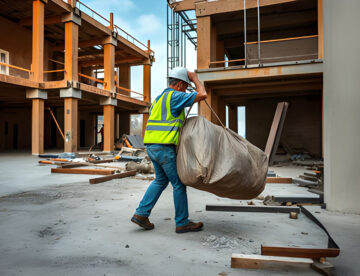
In today’s fast-paced construction industry, providing secure, meaningful and progressive employment is more important than ever. Skills shortages, new regulations and evolving technologies mean companies must invest in people if they want to thrive.
At Sheriff Construction, Sheriff Brickworks and our other sister companies, we believe that offering high-quality jobs goes hand in hand with continuous training and personal development – because when people are supported to grow, businesses do so too. Read on to find out how we’re putting this into practice across our sites and office teams.

The UK Chancellor’s 2025 Autumn Budget delivered last week has sparked major conversation across the country – not least within construction, where decisions around infrastructure, taxation, workforce development and wage costs will all impact the sector, some positively and some negatively.
So, what are the key measures, and how might they help or hinder construction? In this week’s blog, we’re aiming for a balanced breakdown by highlighting some of the pros and cons.

We’ve reached that time of year again. It’s a few weeks since the clocks turned back, the afternoons feel like night-time and many people in construction – whether on site or in office-based roles – are starting and finishing their working day in the dark.
Shorter, darker days can increase the risk of accidents on site, make commuting more hazardous and create extra opportunities for crime. The good news is that a few simple habits and precautions can make a big difference. In this blog, we look at three key areas for staying safe: working on site, driving to and from work and protecting sites from crime.

When working on a construction site, actions like lifting, bending, climbing and moving in awkward positions are often part of the everyday job. Because of that, it can be easy to think this kind of work is enough to keep you physically fit.
The fitness industry would disagree – arguing that when people who carry out physically demanding jobs also adopt a structured fitness programme, it can lead to better performance, reduce downtime and extend careers. Find out more about why fitness matters so much and download a sample programme in this week’s blog.

Last Thursday, Sheriff Construction officially marked its 20th Anniversary in business at a celebratory Gala – bringing colleagues, clients, suppliers, friends and family together for a truly memorably evening.
We gave a flavour of what happened on this special occasion on our social media last week with a promise to share a more detailed update. Now, take a look at this week’s blog for the full story.

From tower cranes shifting steel beams to hoists raising materials up tall façades, lifting equipment is central to modern construction. But along with that power comes huge responsibility. When lifting operations go wrong, the consequences can be catastrophic – collapse, dropped loads, people getting struck or even fatally injured.
In this week’s blog, we’ll cover why mechanical lifting demands rigorous planning and control and share some practical DO’s and DON’Ts based on HSE guidance.

The UK Government has just announced several late-stage amendments to its Planning and Infrastructure Bill – designed to stop unnecessary refusals, cut repeated legal challenges and get Britain building both housing and infrastructure faster.
The changes include new powers for ministers, protections for developments under judicial review and a streamlined role for Natural England. Find out what this could mean for the construction industry in our latest blog.

In the construction industry, cash flow is king. Yet one persistent and unfair practice continues to drain liquidity from subcontractors and smaller firms – retentions.
The National Federation of Roofing Contractors (NFRC) has long campaigned to eliminate or at least reform retentions, and now the Government has launched a major consultation on both late payments and retentions. This is a crucial moment in which the sector can have its say and potentially influence legislative changes. For more information, take a look at this week’s blog.

When you think about construction hazards, you might picture scaffolding, power tools, or heavy machinery. Yet one of the most common (and often underestimated) risks is manual handling.
Every day, workers lift, carry, push and pull a variety of loads – from heavy materials to awkward tools. Done incorrectly, these tasks can lead to painful injuries that affect not just working life, but long-term health too. Keep reading for a reminder of the key DOs and DON’Ts around manual handling on site.

